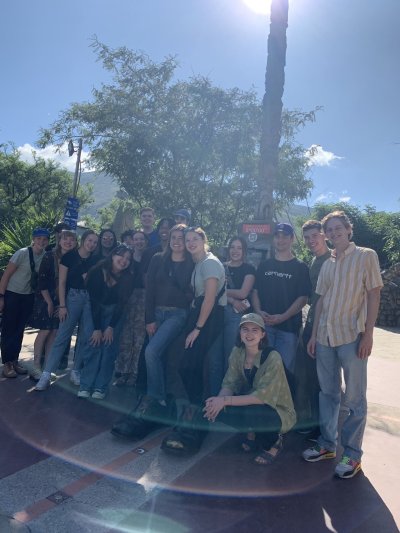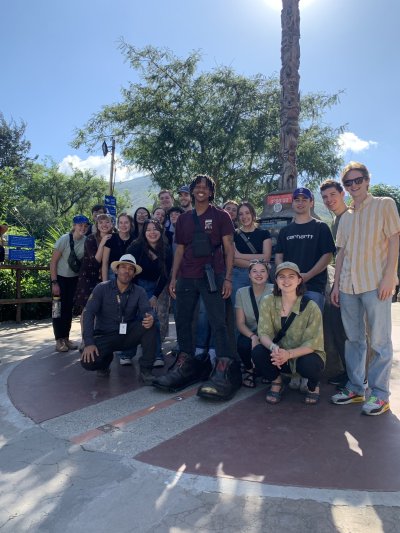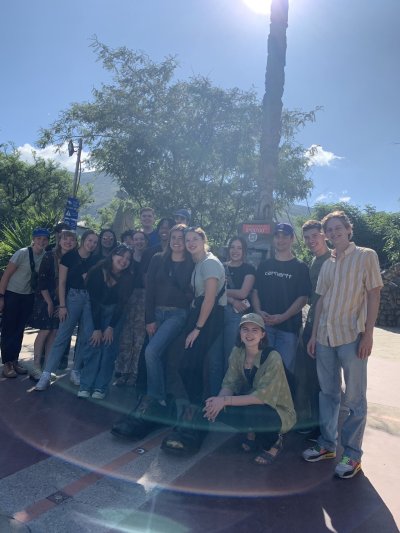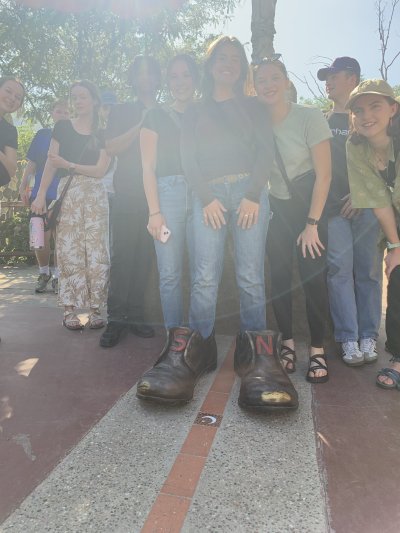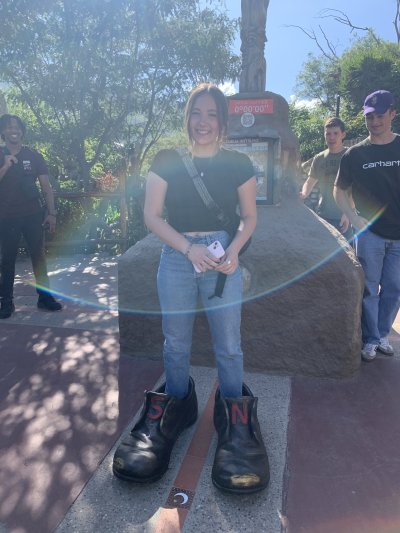SST students on the Equatorial Line
Museo Intiñan features a tile covered line that marks the equatorial divide—to make it visible to the naked eye—, plus, life size representations of native people’s houses, ancient tombs, and regional flora and fauna. This provides interactive experiences at a scientifically intriguing place. The museum and its grounds sit on private property, but through the support of a foundation and modest entrance fees, they are open to the public.
Our 2024 SST group made a day of the visit!
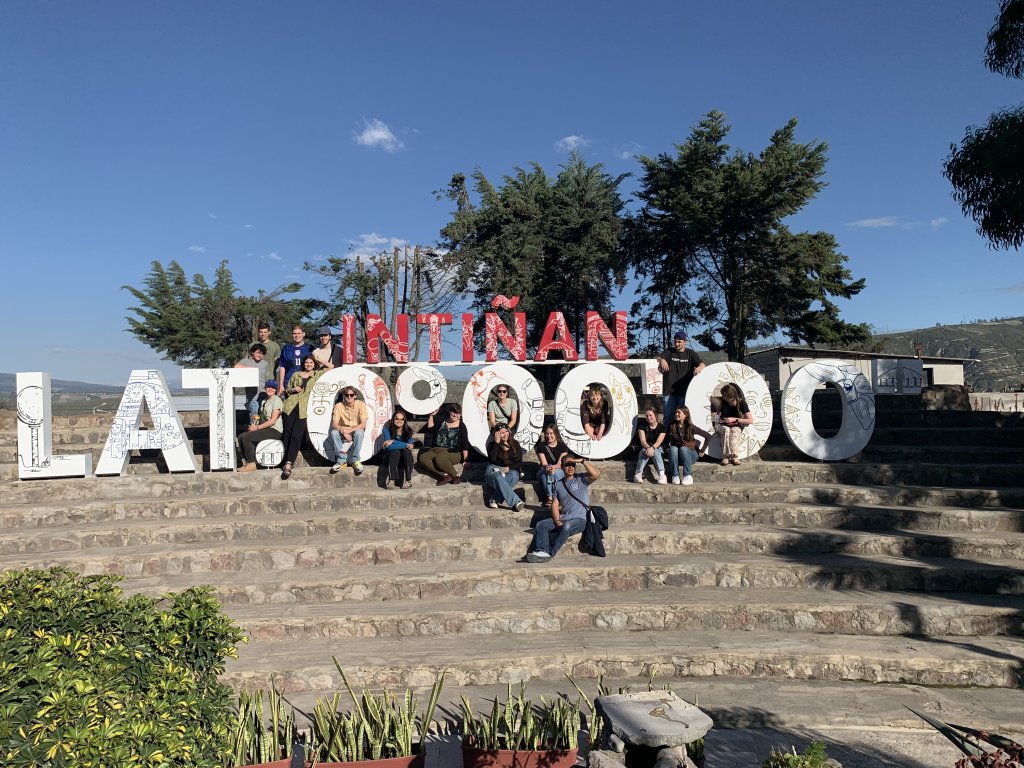
One of the highlights of Intiñan is a demonstration of clockwise and counterclockwise whirlpools that depend on which side of the equatorial line the water drains. This is attributed to the Coriolis Effect, which is the movement variations, caused by Earth’s rotation, on objects that are not tightly connected to it. It was a bit controversial since the water mass used and its distance from the equatorial line were negligible. See the images and decide for yourselves.
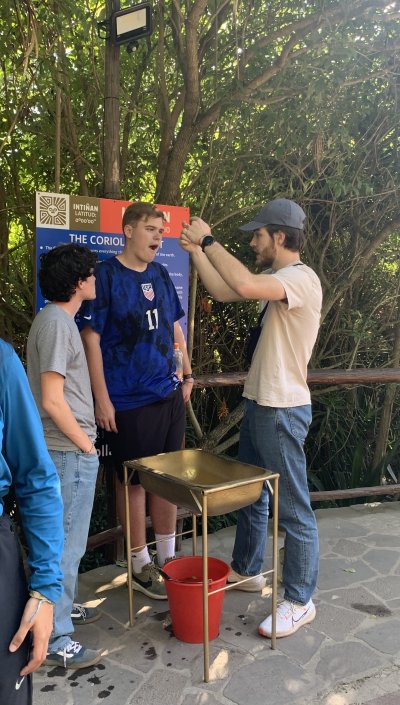
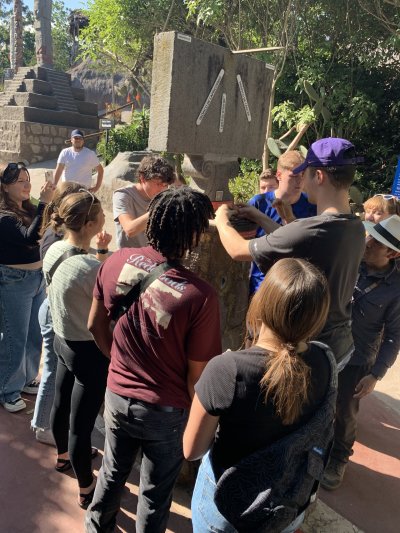
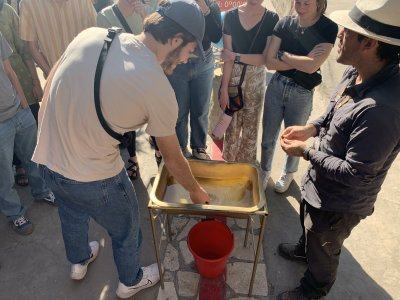
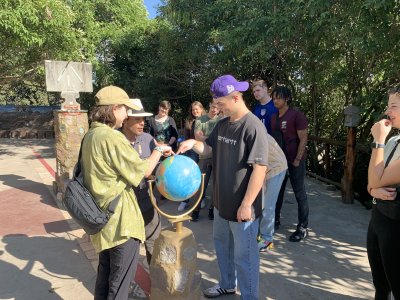
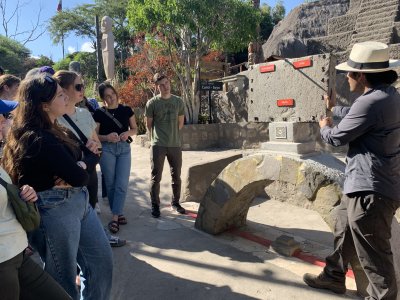
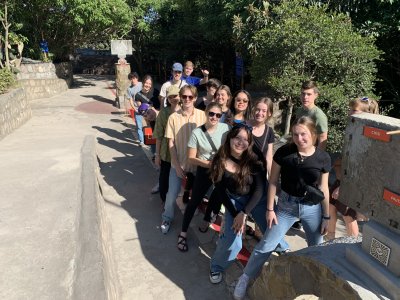
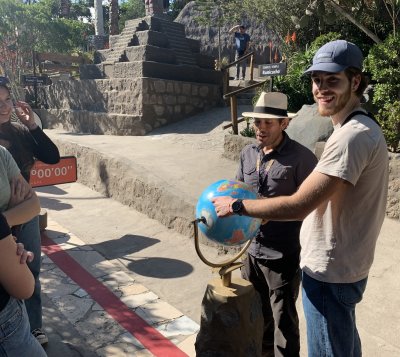
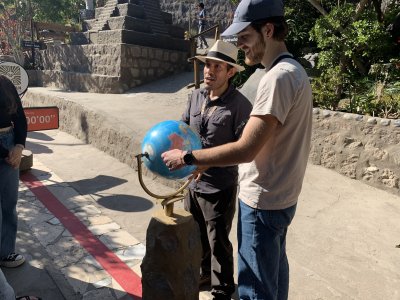
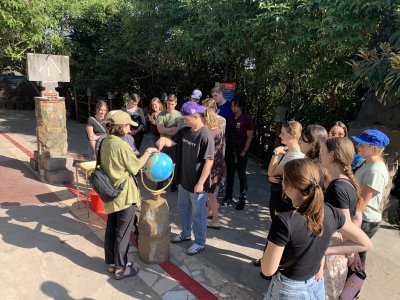
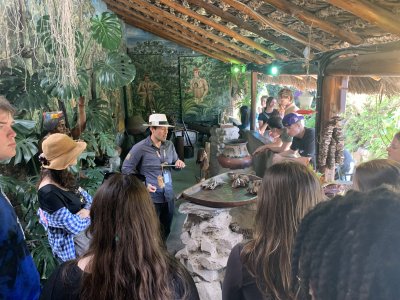
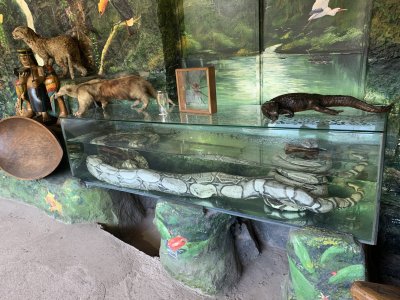
We also witnessed how gravity affects our sense of balance, downward force, and intellectual skepticism. On the Equatorial divide, gravity has an interesting effect on the vestibular system; it makes the fluids in the inner ear a bit confused and walking on a straight line with one’s eyes closed becomes harder.
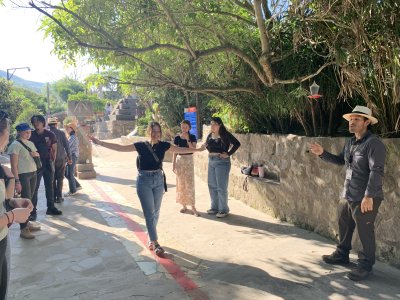
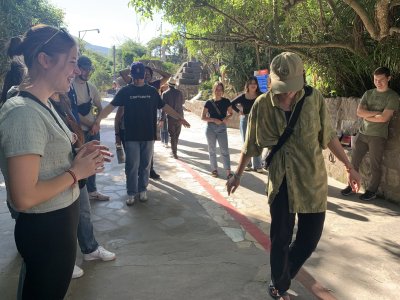
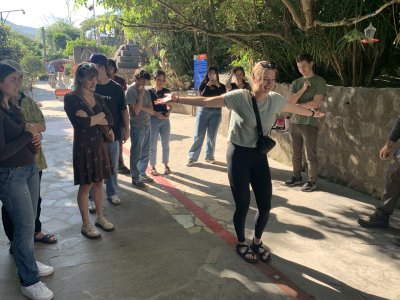
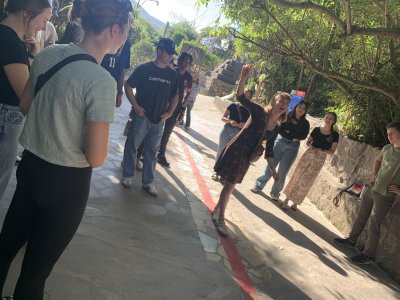
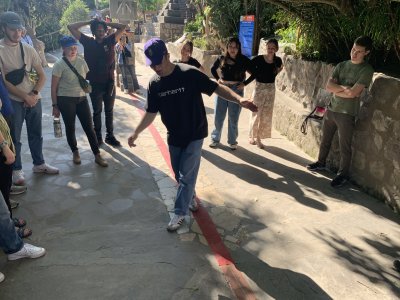
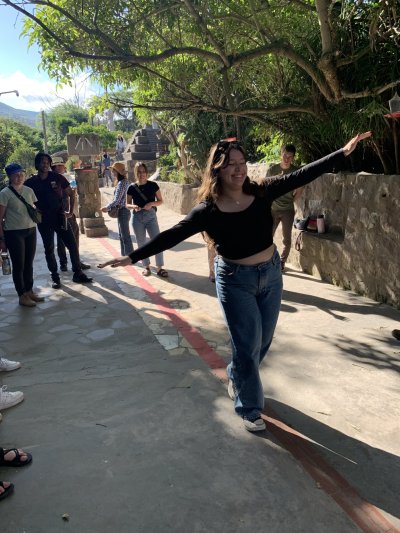
“Put yourself in my shoes”
